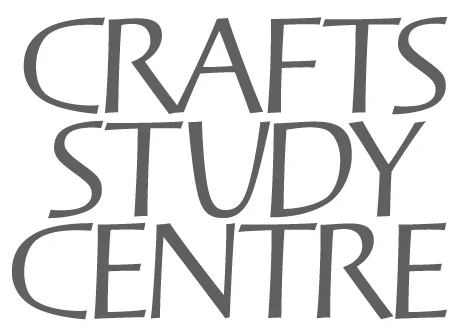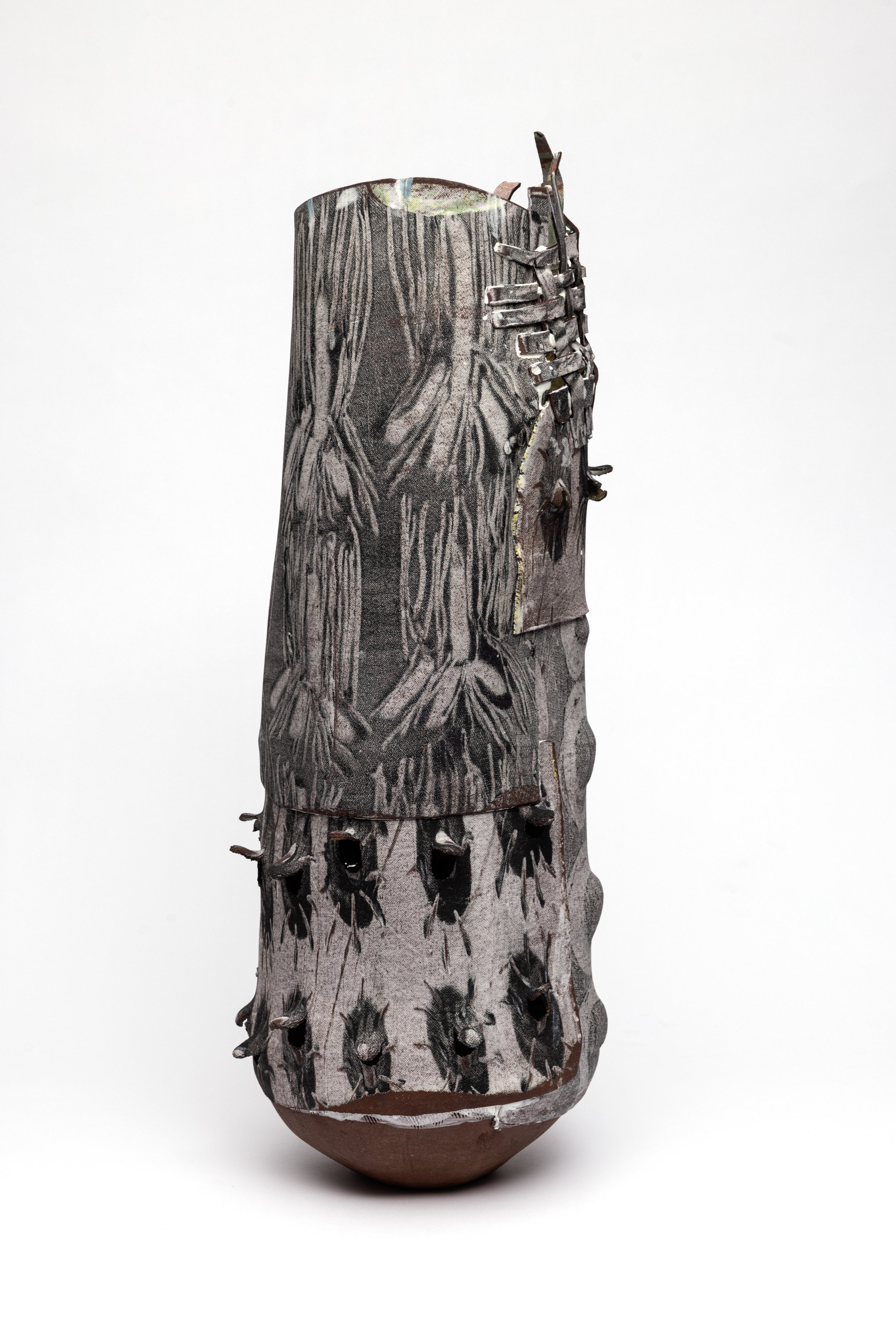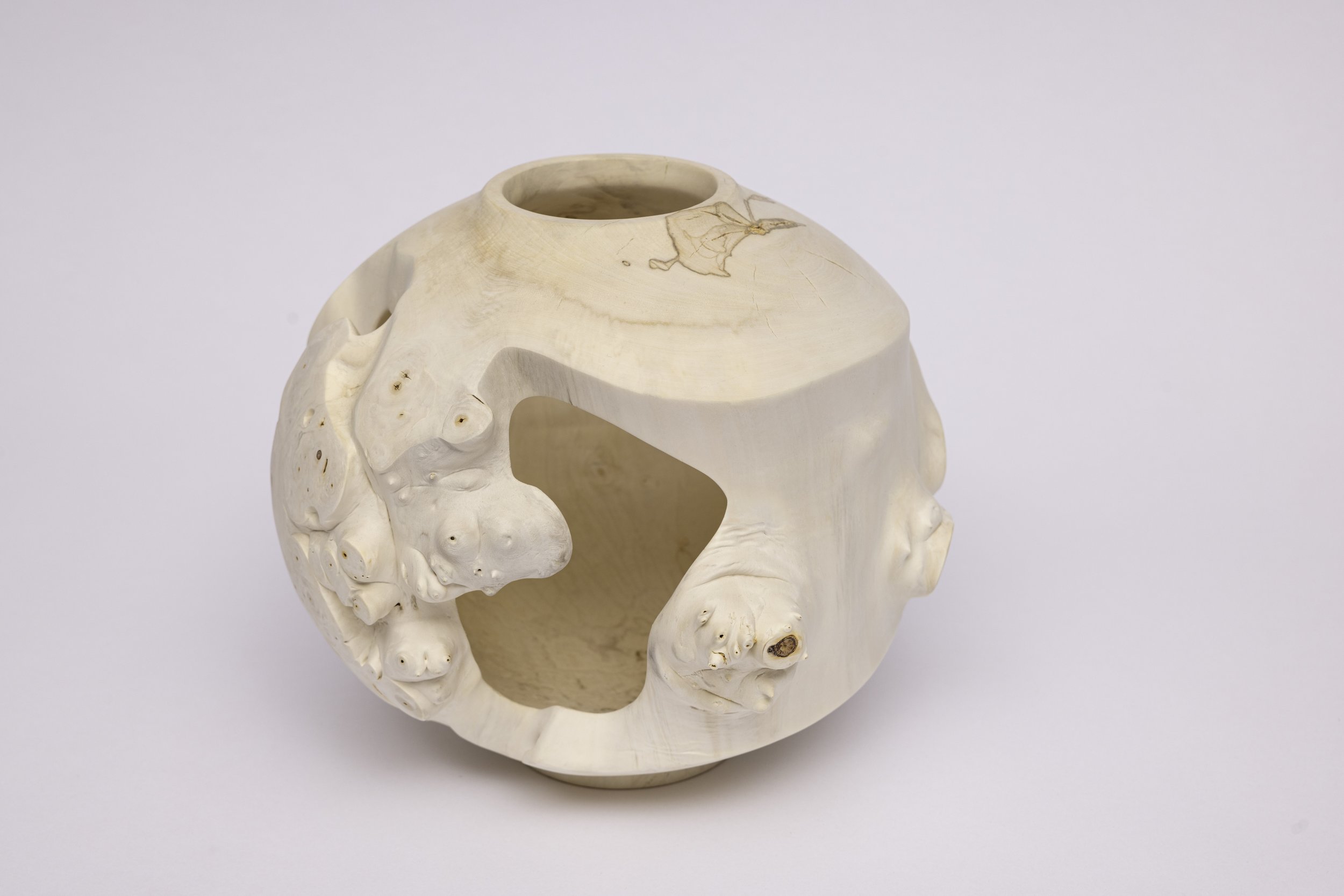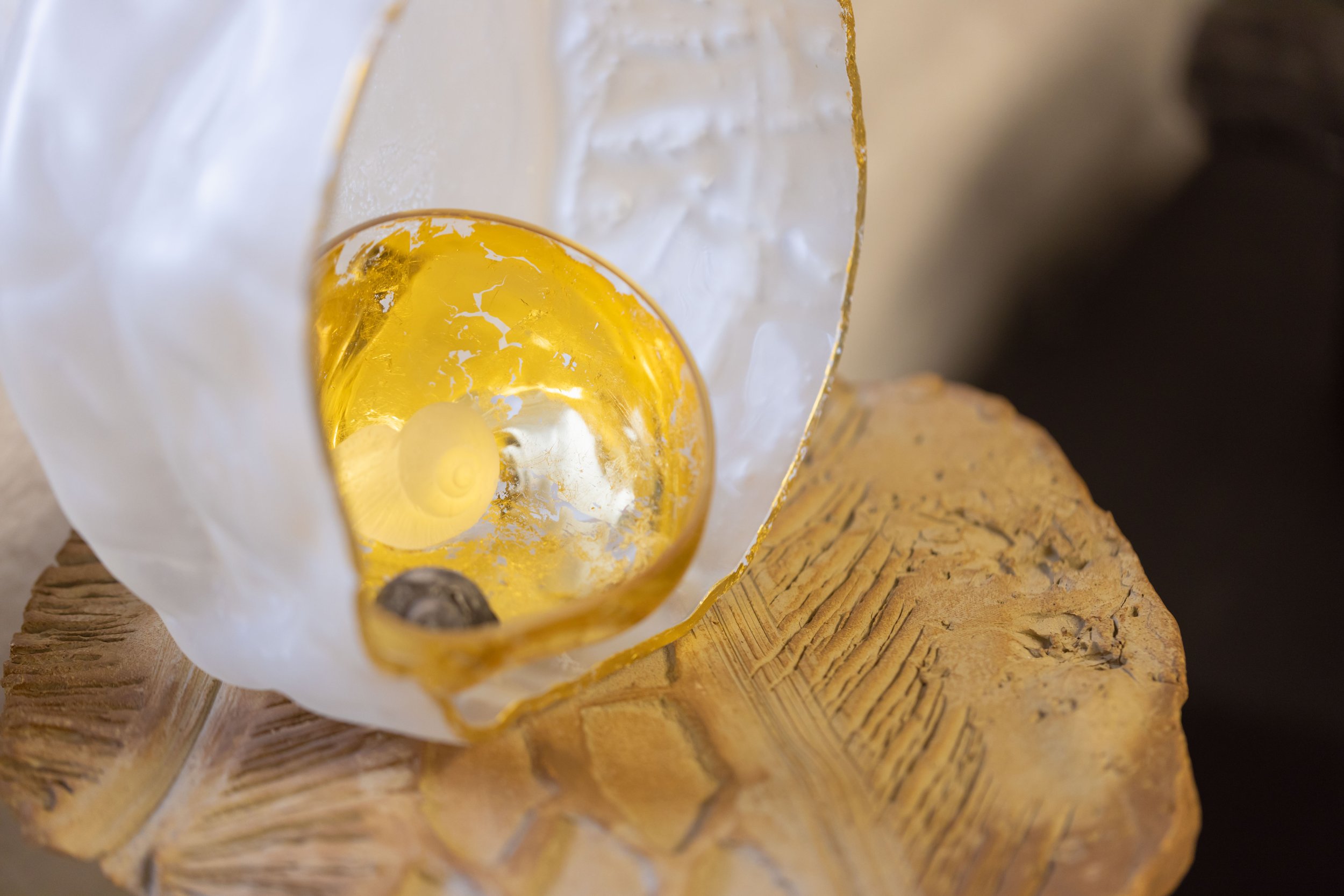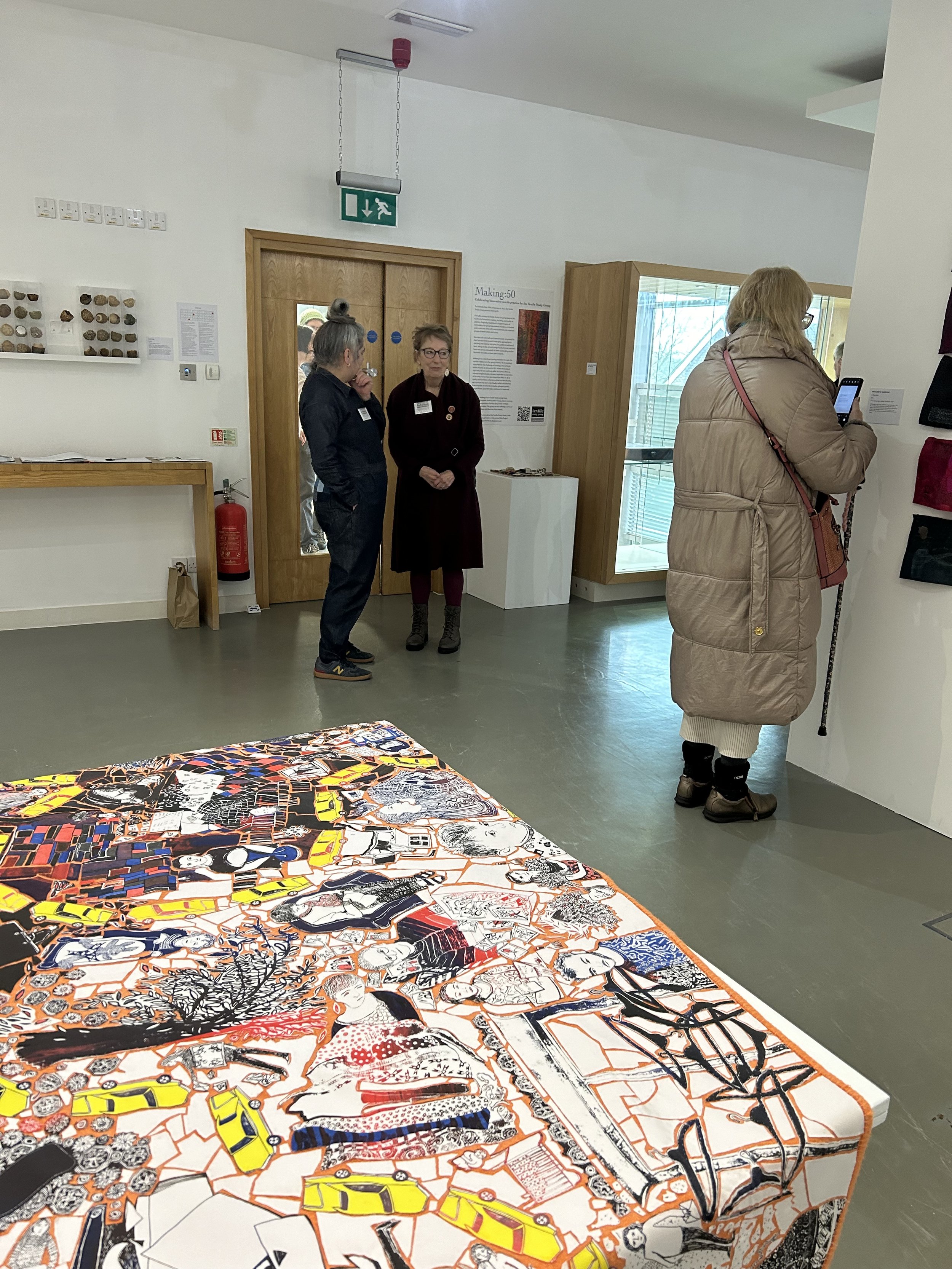Mary Farmer Study Day
/On the 29th August, the Crafts Study Centre collaborated with West Dean College for a Study Day devoted to the career, work and legacy of Mary Farmer. The day included a line-up of acadamics, curators and former students of Mary Farmer.
The first part of the day included a talk by Professor Emerita Lesley Millar titled “A View from the Bridge Part 2: plus ça change…?” and Independent Curator Amanda Game’s contribution, '“Connecting Threads”. Aware of the number of textile artists and weavers in the crowd, Millar talked of the attributes of Farmer’s work that were familiar to them - the way colour in yarn, and wool in particular, achieves a depth unparalleled in other media. She also talked of the ‘release’ Farmer instilled in students from historic expectations of the medium. This awareness of Farmer’s importance was set against the string of recent textile and tapestry exhibitions that Millar argued overemphasised their claim of being the ‘first discovery’ of the medium, which have the result of returning discussions on the existence of textile as an art form back to square one. She suggested that a ‘de-framing’ of textile art was needed, embracing the range of curatorial, research and aesthetic possibilities that are possible with cloth. Amanda Game started her talk with a similar reference to the long historic association between textiles and modernism, but devoted the bulk of her attention to Farmer’s career and how both the donation of the archive to the Crafts Study Centre and the exhibition came about. She paid particular homage to two men that had a significant steer in Farmer’s career: Henry Morris, the pioneering post-war educationalist who set up Digswell Arts Trust and the associated fellowship programme which Farmer was awarded in the early 1960s that helped launch her career; and Ralph Turner, the Crafts Council exhibitions lead who ensured Farmer’s visibility in major exhibitions such at the 1982 exhibition The Maker’s Eye.
Following the first set of talks was a tour of West Dean’s Tapestry Studio on the College’s grounds - the only professional tapestry studio in England. Philip Sanderson, the studio leader, talked through how the studio operates, current and past commissions, and the challenges of making large works. Confidentiality agreements mean that no photos can be taken in the space, leaving the strong aroma of the loom’s wooden construction as the abiding memory.
The afternoon session started with Professor Anne Massey who viewed Farmer’s career through a feminist lens, appraising the barriers that existed as a woman working in textiles in the 1970s and 1980s, identifying in the archive gendered stereotypes that were pervasive. Following Massey was Jennie Moncur, a practicing tapestry artist who talked through the demands of subscribing to the ‘doer’ school of tapestry - i.e. involved in all stages of production from setting up the loom and the original design to stitching up looses ends once the weaving has finished - as opposed to the ‘have done’ school where designs are shared or completed by teams of weavers. Moncur concluded that as a fellow ‘doer,’ Farmer’s injury in the mid 1990s would have been especially difficult to accept, a possible reason for her withdrawal from public view. Ann Coxon rounded off the afternoon with a discussion of the important role that tapestry played in the expanded field of textile from the 1960s to the present with reference to the Lausanne Biennials, the 1969 MOMA exhibition Wall Hangings, and more recent exhibitions, including Anni Albers at the Tate Modern in 2016, which she curated. A question from the floor on the dramatic installation of a loom in the first room of the Albers exhibition proved a fruitful topic of conversation.
Closing the day was the panel discussion with former students of Farmer - Shelley Goldsmith, Justine Randall and Philip Sanderson. They recalled Farmer’s particular approach to teaching: her ‘Zen’ attitude, provoking with tough questions and a knowing smile, and her uniform of black clothing. In the mid 1990s, Farmer had to deal with the closure of the Tapestry course at the RCA, but still managed to convey her belief in a liberal arts education that freed up students from convention while maintaining technical rigour.
Thanks to Philip Sanderson, Tim Bolton and all the speakers for making this special event possible, and the wider collaboration with West Dean College through the course of the Mary Farmer exhibition at the Crafts Study Centre. Special thanks to Zac Whitewood-Moores, Amanda Game, Gill Hedley and Jennifer Hallam for all their work in brining the Mary Farmer archive and the exhibition of Farmer’s extant works to the Crafts Study Centre.
A recording and presentations can be accessed on request - please email craftscentre@ucreative.ac.uk.
